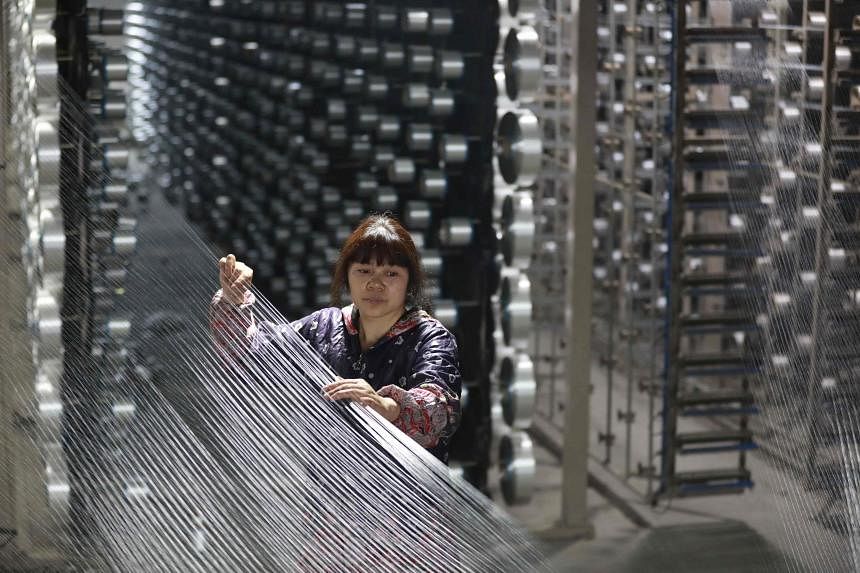China’s economic growth was buoyed by strength in factory output and investment at the start of 2024, while a revival in consumption continues to show more muted progress.
Industrial output rose 7 per cent in January to February from the same period in 2023, the National Bureau of Statistics of China (NBS) said March 18, much faster than economist estimates.
Growth in fixed-asset investment accelerated to 4.2 per cent, also stronger than forecasts. Retail sales increased 5.5 per cent, roughly in line with projections.
“The economy is stabilising with the help of supply-side stimulus and some improvement in export demand,” said Ms Michelle Lam, Greater China economist at Societe Generale SA, citing the positive investment and industrial data. She said “consumer demand remained the weak spot”.
The strong industrial and investment figures add to evidence of more traction for the world’s second-largest economy after policymakers ramped up stimulus late in 2023. Earlier, export growth exceeded expectations. Building and sustaining momentum is key to achieving Beijing’s growth target for 2024 of around 5 per cent – that’s the same as 2023’s, but harder to attain given a less favourable comparison base.
The offshore Chinese yuan edged up slightly by less than 0.1 per cent after the data release and after the central bank extended support to the currency via its daily reference rate. The Australian dollar, which is seen as a proxy for China, climbed 0.1 per cent.
“The economy kept rebounding and improving in January and February with various policies taking effect. But we also need to see that the external environment is increasingly complex, grim and uncertain, and the problem of insufficient domestic demand still remains. The foundation for the economy’s rebound needs to be further solidified,” the NBS said in a statement accompanying the release.
The urban jobless rate was 5.3 per cent, up from 5.1 per cent as of the end of December.
Investment in property development fell 9 per cent, remaining a major drag on the economy. Consumer and business confidence is still weighed by uncertain income outlook. Manufacturing overcapacity is growing, fuelling tensions with trade partners and casting a cloud on the export outlook.
Consumer prices rose in February for the first time in five months, but the rebound was largely helped by a spending spree during the Chinese New Year holiday and is likely short-lived, analysts said.
Beijing has sweetened its fiscal package, embarking on a programme to sell ultra-long special sovereign bonds in 2024 and in the years to come. It’s also fleshing out a plan to upgrade industrial equipment and boost household spending in consumer goods, pledging to help fund the programme possibly worth hundreds of billions of yuan with Budget money.
The People’s Bank of China (PBOC) has maintained a loose monetary policy stance, with its governor Pan Gongsheng flagging a willingness to inject more liquidity to support growth when necessary.
However, the boost from the Chinese government’s on-balance-sheet spending will be offset by its separate campaign to rein in local debt risks. The central bank’s scope for more interest rate cuts is also limited by a wide yield gap with the United States and low profit margins at Chinese banks.
The PBOC last week held the rate on its one-year policy loans steady and drained cash from the banking system via the tool for the first time since November 2022.
The NBS doesn’t provide figures for January alone. It releases only combined readings for the first two months of each year to smooth out volatility from the Chinese New Year holiday, which shuts down most factories and businesses, and can fall on either month in any given year. BLOOMBERG

